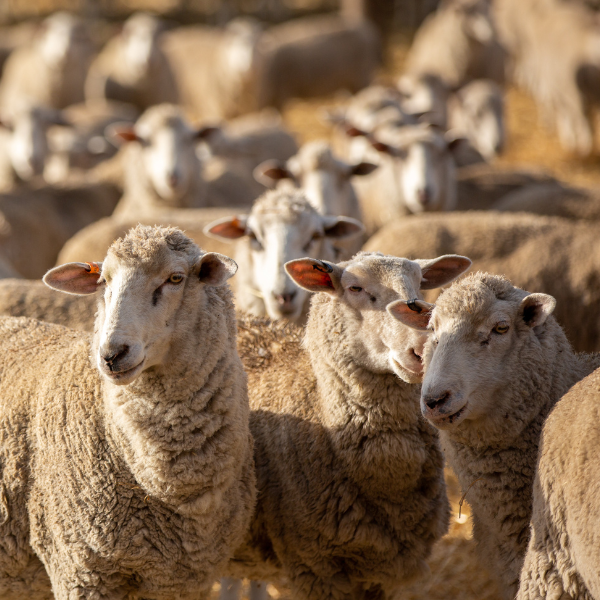AUSTRALIA’S sheep flock is expected to stabilise after this year and remain above its ten-year average, Meat & Livestock Australia said this week.
MLA said the national sheep flock is expected to reduce slightly driven by record lamb slaughter and elevated sheep turnoff.
Lamb slaughter is projected to reach record levels two years in a row, climbing to 23.7 million in 2024, while sheep slaughter will remain high, driven by a large and productive breeding flock.
MLA said after three years of consecutive growth, the Australian sheep flock is set to decrease by 2.9 percent to 76,500,000 in 2024, according to the latest Sheep Industry Projections.
During the 2020-2022 rebuild phase, producer focus on productivity and genetics has led to impressive marking rates across the sheep flock, MLA said. However, the shift from beneficial weather conditions to average conditions in 2023 led to elevated turnoff of unproductive breeding stock, resulting in a 46.7pc lift to sheep slaughter.
MLA’s manager of market information Stephen Bignell said the sheep turnoff will mostly be limited to older, unproductive ewes, and this year’s lamb cohort is expected to remain solid, but slightly smaller, than previous years.
“The current resilience of the sheep flock means that high lamb slaughter will have a less intense impact on the national flock size than in previous maintenance periods.
“Meaning that there will be a decrease in overall flock numbers, but not as dramatic as in comparative years,” Mr Bignell said.
Record Australian sheep meat supply for global markets
Slaughter and production are projected to peak in 2024, causing record supply of Australian sheep meat into the global market.
This comes after Australia produced the most lamb on record in the calendar year 2023, with 599,461 tonnes of lamb being produced in 2023, putting it 11.6pc higher than 2022, which was another record year, MLA said.
As the largest exporter of sheep meat, high Australian production will increase globally traded sheep meat volumes.
“Economic resilience in the United States and emerging markets will drive demand for lamb, while the outlook for consumer demand in China remains uncertain,” Mr Bignell said.
“Regardless, a shortage of competitor proteins will encourage imports of sheep meat in high protein consumption markets.”
2024 lamb production to set a new record
MLA said lamb production is set to break a new record in 2024, beating the previous year’s record achieved in 2023.
It is projected that lamb production will reach 621,000 tonnes in 2024, a 9pc or 54,000 tonnes increase compared to 2023 figures. If this eventuates it will be 21.3pc or 109,359 tonnes above the 10-year average, MLA said.
In 2025, MLA has forecast lamb production to ease to 587,000 tonnes and then rise in 2026 by 19,000 tonnes to 606,000 tonnes due to improved carcase weights.
Mutton output to be highest since 2006
Mutton production will be the largest since 2006, set to produce 254,000 tonnes in 2024 up by 3.14pc on 2023 volumes. Production will remain elevated in 2024 due to a small lift to slaughter.
MLS said fewer breeding ewes will be turned off next year. The mutton forecasts for 2025 and 2026 will reach 229,000 and 207,000 tonnes respectively, as the industry moves towards a transitional period where production will stabilise as the industry enters an average season.
Source: www.sheepcentral.com / Adobe Stock
DAMACO GROUP: DRIVING BUSINESS
Subscribe to the Damaco Group newsletter and receive a monthly dose of valuable insights, market updates, and expert opinions straight to your inbox.
As a leading player in the global meat market, Damaco Group is committed to providing you with the most relevant and timely information about the industry.
By subscribing to our newsletter, you'll gain access to exclusive content and stay informed on the latest developments in the meat sector.
Don't miss out on this opportunity to enhance your knowledge and stay ahead of the curve. Subscribe today and join our community of industry professionals!
